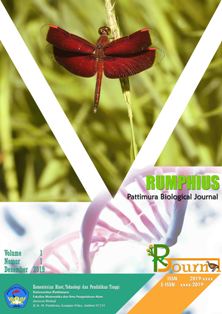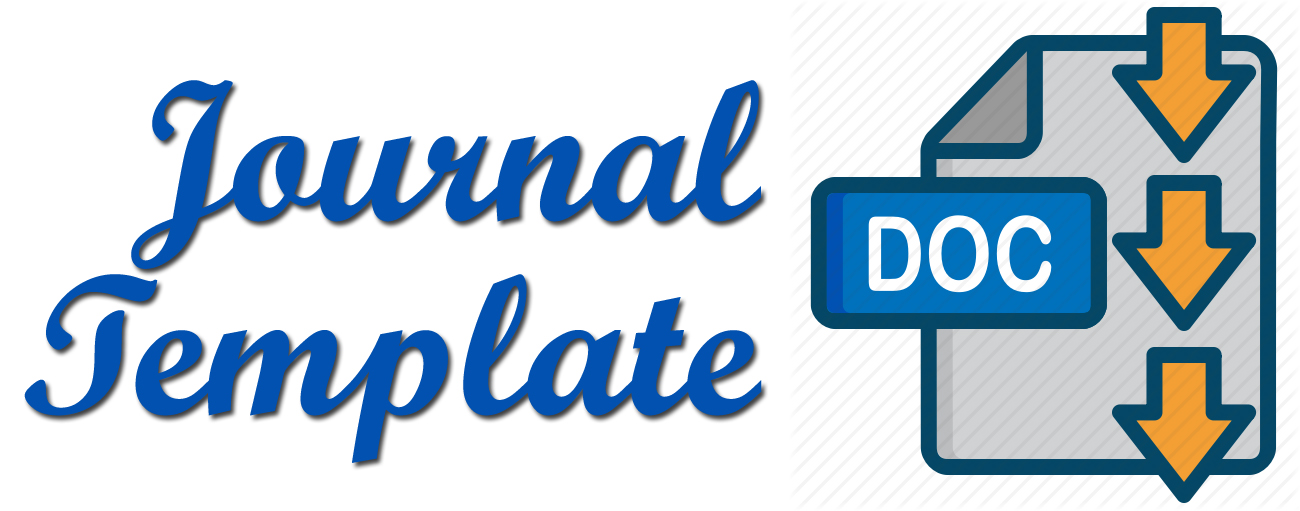SOATTING OF UREA FERTILIZER AND CONCENTRATION LEVEL OF SEAWEED CARRAGINAN Eucheuma cottonii
Abstract
Euchema cottonii seaweed as carrageenan-producing, growth and development is in need of the quality of light and nutrients such as nitrogen, such as urea. This study aims to determine the combination of long soaking and urea concentration levels that are effective in improving the content of Euchema carrageenan cottonii. This research method uses long immersion urea treatment 2 hours, 4 hours, 6 hours and without immersion (control) and urea concentration of 1 gram, 1,5 gram, 2 gram and wihout of urea fertilizer (control), repeat 3 times. The content of carrageenan in each treatment will be analyzed using ANOVA, followed by HSD test at 95% significance level. The results showed that the best carrageenan content (66.52%) in the treatment of long soaking 2 hours with 2 grams of urea concentration and carrageenan content of the lowest (51.33%) obtained in the treatment of long immersion 6 hours with 1 gram of urea concentration. Carrageenan seaweed Eucheuma cottonii on research generally meets the standards of quality carrageenan for maximum moisture content 35% (SNI Indonesia), and ash content of 15-40% (FAO, FCC), a maximum of 35% (EEC).
Downloads
References
Afrianto and E. Liviawati. 1989. Seaweed Cultivation and Processing Methods, Jakarta: Bharanata Pustaka
Anggadiredja, A. Zatnika, H. Purwoto and S. Istini. 2006. Seaweed: Cultivation, Processing and Marketing of Potential Fisheries Commodities, Jakarta: Penebar Swadaya.
Aluman, Hadayani and Effendy. 2016. Analysis of Seaweed Production and Income in Bulagi Dua Village, Bulagi District, Banggai Islands Regency," J. Agroland, vol. 23, no. 2, pp. 131140.
Asikin and I. Kusumaningrum. 2019. Physicochemical Characteristics of Carrageenan Based on Different Ages of Harvest from Bontang Waters, East Kalimantan," JPHPI, vol. 22, no. 1, pp. 136-142.
AOAC. 1995. Official Methods of Analysis of AOAC International, Washington DC: Association of Official Analysis Chemists International.
Ainsworth and J. M. V. Blanshard. 1980. Effect of Thermal Processing on Structure and Rheological Properties of Carrageenan/Carob Gum Gels,” Journal of Texture Studies, vol. 11, no. 2, pp. 149-162.
Budiyani, K. Suwartimah and Sunaryo. 2012. Effect of Addition of Nitrogen with Different Concentrations on the Growth Rate of Seaweed Caulerpa racemosa var. uvifera,” Journal of Marine Research, vol. 1, no. 1, pp. 10-18.
Effendi. 2003. Water Quality Studies for Management of Water Resources and Environment, Jakarta: Kanisius.
Hudha, R. Sepdwiyanti and S. D. Sari. 2012. Extraction of Carrageenan from Seaweed (Eucheuma spinosum) with Varying Solvent Temperature and Operation Time," Journal of Chemical Engineering, vol. 6, no. 2, pp. 50-53.
Iksan. 2005. Study of Growth, Production of Seaweed (Eucheuma cottonii) and Carrageenan Content in Various Seed Weights and Thallus Origin in the Waters of Guruaping Oba Village, North Maluku," Postgraduate School, Bogor Agricultural Institute.
Jianting, S. Zhongmin and D. Delin. 2014. Effect of Temperature, Irradiance on the Growth of the Green Algae Caulerpa lentillifera (Bryopsidophyceae, Chlorophyta)," Journal of Applied Phycology, vol. 27, no. 2, pp. 879-885.
Jacoeb, P., Suptijah and Z. 2013. Chemical Composition, Bioactive Components and Antioxidant Activity of Lindur Fruit (Bruguiera gymnorrhiza)," JPHPI, vol. 16, no. 1, pp. 86-94.
Kadi and W. S. Atmadja. 1988. Seaweed (Algae): Types, Reproduction, Production, Cultivation and Post-Harvest, Jakarta: Center for Oceanological Research and Development, Indonesian Institute of Sciences (LIPI).
Latif. 2008. The Effect of Fertilizer Application on the Growth, Production and Carrageenan Content of Kappaphycus striatum Seaweed," Hasanuddin University, Makassar.
Lencana, R. Nopianti and I. Widiastuti. 2018. Characteristics of Seaweed (Eucheuma cottonii) Jam with the Addition of Sugar Composition," Journal of Fisheries Products Technology, vol. 7, no. 2, pp. 104-110.
Auction. 2010. Differences in Growth Quality Indicators of Two Branching Forms of Red Algae (Eucheuma cottonii) at Cultivation Locations in Toisapu Waters, Kec, South Leitimur, Ambon: Unpatti FKIP Biology.
Munadi. 2015. Seaweed, an Unutilized Potential Commodity," in Seaweed Commodity Info, Jakarta, Al-Mawardi Prima Member of IKAPI JAYA. p. 118.
Neksidin, U. K. Pangerang and Emiyati. 2013. Water Quality Study for Cultivating Seaweed (Kappaphycus alvarezii) in the Waters of Kolono Bay, South Konawe Regency," Indonesian Marine Mina Journal, vol. 3, no. 12, pp. 147-155.
Purwadi. 2011. Critical Limit of a Nutrient Element (N) and Measurement of Chlorophyll Content in Plants,” Diponegoro University, Semarang.
Ruhnayat. 2007. Determination of Basic Nutrient Requirements N, P, K for the Growth of Vanilla Plants (Vanilla planifolia Andrews)," Bul. Littro, vol. 28, no. 1, pp. 49-59.
Silea and L. Masitha. 2007. Use of Bionic Fertilizer on Seaweed Plants (Eucheuma sp),” Unidayan Faculty of Fisheries and Marine Sciences, Baubau.
Suryaningrum, S. T. Sukarto and S. Putro. 1991. Study of the Quality Characteristics of Cultivated Seaweed Commodities, Eucheuma cottonii and Eucheuma spinosum," Journal of Post-Harvest Fisheries Research, vol. 68, pp. 13-24.
Supriyanti, G. W. Santosa and A. Dermawan. 2017. Quality of Carrageenan Extract from Seaweed "Kappaphycus alvarezii" Cultivated in the Waters of Kartini Beach and Kemojan Island, Karimunjawa, Jepara Regency," Marina Oceanography Bulletin, vol. 6, no. 2, pp. 88-93.
Samsuari. 2006. Research on Making Carrageenan from Eucheuma cottonii Seaweed in the Water Area of Jeneponto Regency, South Sulawesi Province, Bogor: Bogor Agricultural Institute, IPB Postgraduate Program.
Sutejo and A. G. Kartasapoetra. 1990. Fertilizers and Fertilization Methods, Jakarta: Rineka Cipta.
Zainuddin and M. M. Rusdani. 2018. Performance of Kappaphycus alvarezii Seaweed from Maumere and Tembalang in Longline Cultivation Systems," Journal of Aquaculture Science, vol. 3, no. 3, pp. 116127.
Zatnika and W. I. Angkasa. 1994. Seaweed Cultivation Technology," in Aquaculture Week Seminar V, Jakarta.
Authors who propose a manuscript and have it approved for publication know that the manuscript will be registered and become part of the RPBJ. Authors and readers understand that this journal is open and all its contents can be accessed freely, provided that RPBJ is still listed as the source of information. The hope is that this journal can become a vehicle for exchange and scientific knowledge for society and the scientific community, especially in the field of Biology and other branches of science.









